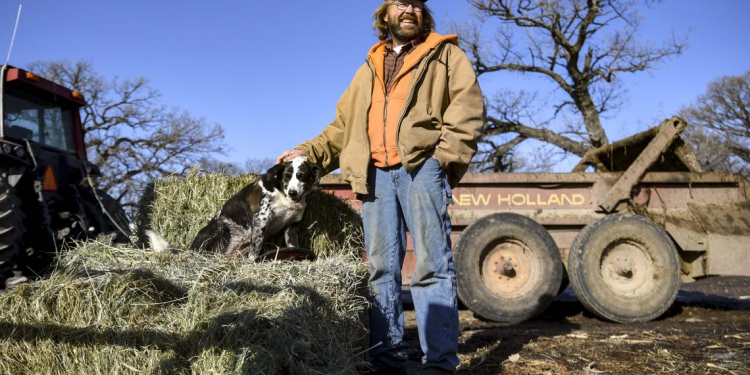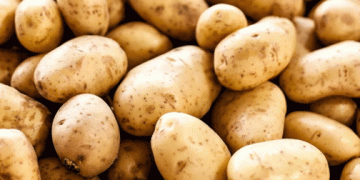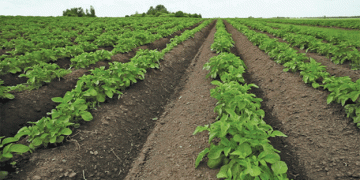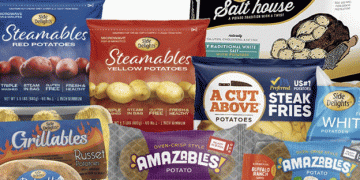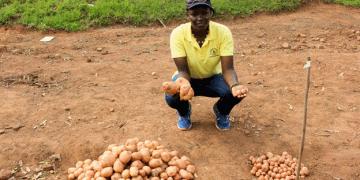Half of the farmers work part-time. Are they economically successful – or are they in the red?
In Germany, half of the farmers work on a part-time basis. These farms generate more than half of their income from non-agricultural activities. But how successful are the part-time farmers as farmers? Can they keep up agronomically and economically with the full-time farms? And how do they earn their money as farmers – apart from the non-agricultural income?

On the one hand, this involves key agronomic data such as yields, animal performance and animal stocking. However, the business results are decisive: in other words , sales , costs , profits and subsidies . Such an analysis is made possible by the test network of the Federal Ministry of Agriculture (BMEL). This data is available there over a long period of time. And they allow a detailed look into the books of the part-time farmers.
This type of farm has evidently proven to be extremely adaptable over the years – especially because of the high proportion of income that comes from non-agricultural activities. The fact is: Part-time farming has a firm place within the existing farm structures.
A first superficial first look at the business data shows: The productivity and above all the sales as well as the agricultural income per unit of area are much lower – especially in animal production. At the same time, the share of subsidies in income is much higher than for full-time farms – and than for all other types of farms.
Agricultural policy accelerates the exit from animal husbandry
What is immediately noticeable is that part-time farmers keep significantly fewer animals than full-time farms. That means: the number of animals per unit area is considerably lower. In addition, the number of animals kept by part-time farmers has decreased dramatically in the last 10 years.
The reasons for this are certainly agricultural policy: Because who wants to invest in new stables and manure containers or in the leasing of land for spreading manure , as a part-time farmer, against the background of the ever more stringent fertilizer ordinance and ever higher animal welfare requirements .
In figures: while part-time farmers kept almost 80 livestock units per 100 hectares 10 years ago, in 2019/20 it was only 58 VE per 100 hectares. That is a reduction of 27 percent and shows which farms the agricultural policy causes the most damage – especially the small farms.
In contrast, the number of animals per unit of area remained almost stable in the case of farms in the main occupation, despite the increasing circulation – at around 136 VE per 100 hectares most recently. At the same time, this shows that the proportion of animals in part-time occupation per unit of area is not even half as high as in the case of farmers in full-time occupation.
A look at the milk yield , as an important criterion of productivity, shows: Despite a moderate increase in output by 5 percent to 6,180 kg per cow – you can’t keep up with the full-time farms! There, the per-cow performance has grown considerably faster in the same period, namely by 13 percent, to around 8,300 kg. The performance advantage over the part-time businesses is thus over a third.
The gap is even greater, for example, in pig production: for example, in the case of live-born piglets per sow – here, productivity in part-time jobs has even deteriorated significantly since
Sideline: well positioned in arable farming – poor animal husbandry
In arable farming, the differences are much smaller – and you can immediately see where the focus of most part-time farms lies: the part-time farmers harvested around 71 dt of wheat per hectare on average over the 10-year period – for the full-time farmers it was 74 dt At the farms in the main occupation, the yields of the secondary occupants are also with sugar beets – but significantly worse with potatoes.
Overall, however, the poor productivity is reflected in the significantly lower sales revenues of the part-time farmers: The sales revenues for the entire crop production are 626 euros per hectare – that is around 20 percent less than in the main occupation with 780 euros.
However, the difference is far greater in what is the most important source of income for the farms in their main occupation: animal production. Here, the sideline workers earn a 10-year average of 863 euros per hectare – and that with a strong downward trend. In the 2019/20 financial year, sales from animal production were only 763 euros.
On the other hand, the farms in their main occupation have a 10-year average turnover from animal husbandry of 2070 euros and were even slightly higher in the 2019/20 financial year at 2350. The backlog in sales of part-time farmers in the animal sector is huge and a 10-year average is 60 percent. In the previous fiscal year, the sales gap even increased to a massive 70 percent.
In addition, part-time farms generate almost half of their total income from animal production – with full-time farms it is 60 percent.
Income half as high as in full-time employment – high subsidies
The large shortfall in sales is of course reflected directly in the agricultural income of part-time farmers – i.e. the profit including personnel expenses. At the same time, their costs are also considerably lower: for example, the cost of materials (costs) for all branches of production averaged over the last 10 years for part-time farmers only at 1027 euros per hectare. That was just half as much as for the main occupation farms – namely 1,890 euros per hectare.

Including wage costs and other expenses for insurance, leasing and maintenance, the total costs add up to 2,175 euros per hectare for the farmers in the secondary occupation and to 3,400 euros for the farms in the main occupation: These are lower costs of almost 40 percent for the secondary occupant – in animal production even 60 percent.
But in the end the lower costs are of little use to part-time farmers. Because: The 10-year average agricultural income per worker at 15,000 euros is not even half as high as that of colleagues in full-time employment at 33,100 euros. The differences in the operating result and profit are similarly large.
And there is one more thing that makes the economic differences clear: Without agricultural subsidies – i.e. direct payments and other grants – things would certainly be tight for many full-time farms . For them, government grants make up between 40 and 50 percent of their income (profit + personnel costs).
For part-time farmers, the farm incomes – after deduction of all costs – have been about as high as the subsidies over the past 10 years. In the last two years, the inflow of funds from subsidies was even higher than the nominal operating income (profit + personnel).
This also means that it should in future come to major agricultural policy changes in the criteria of allocation of subsidies, the huge loss of income would mean for the part-time farmers – and possibly a huge courtyards dying cause. This is especially true for regions such as Baden-Württemberg or parts of Bavaria, where two thirds of the businesses are already doing business on a sideline basis.
